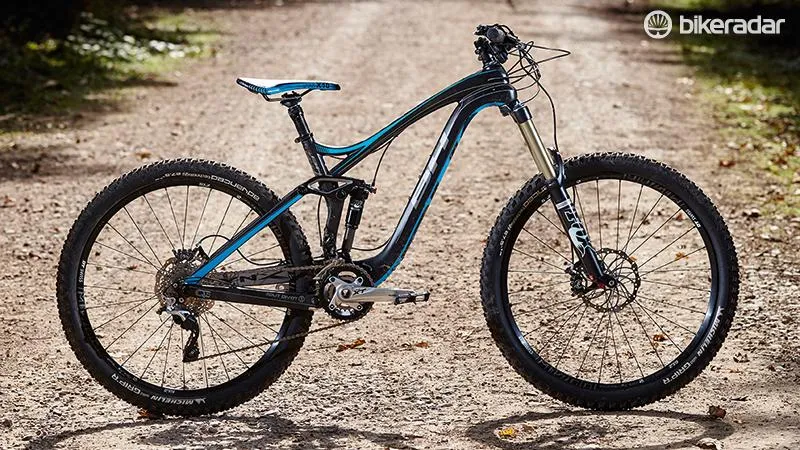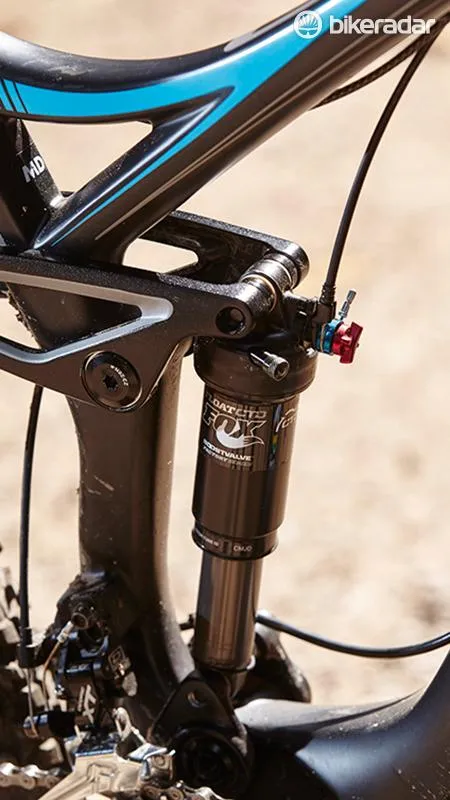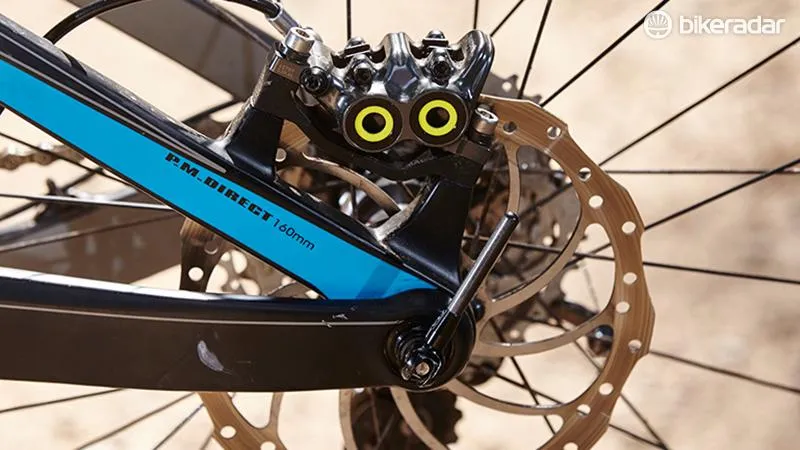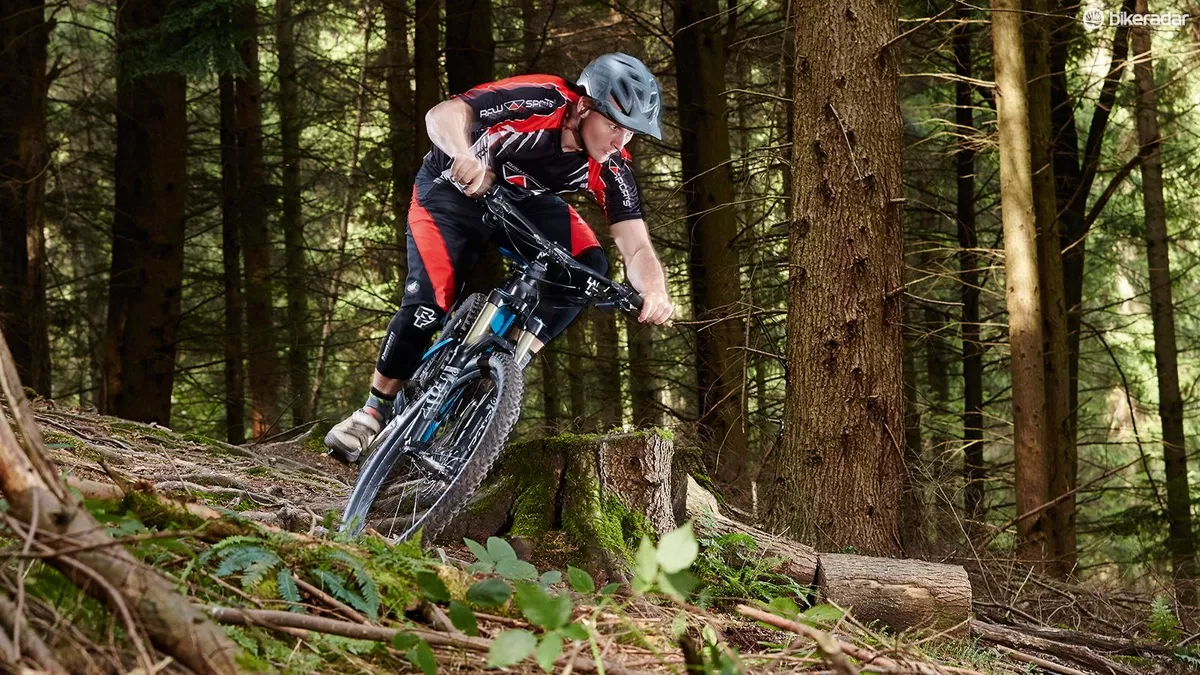BH is a big name in the brand's native Spain, and the Lynx 6 is designed to be a serious enduro race machine. It goes without saying then that we were looking forward to giving it a thrashing.
Swooping carbon lines
The Lynx 6 is available in alloy as well as the carbon version we tested. The Dave Weagle designed Split Pivot suspension system provides 150mm (5.9in) of rear travel. All the expected frame details are there, including a 142x12mm rear end, tapered head tube and ISCG chain guide mounts. Cables are routed internally and the swooping carbon shape around the head tube really does create a suave looking piece of kit.
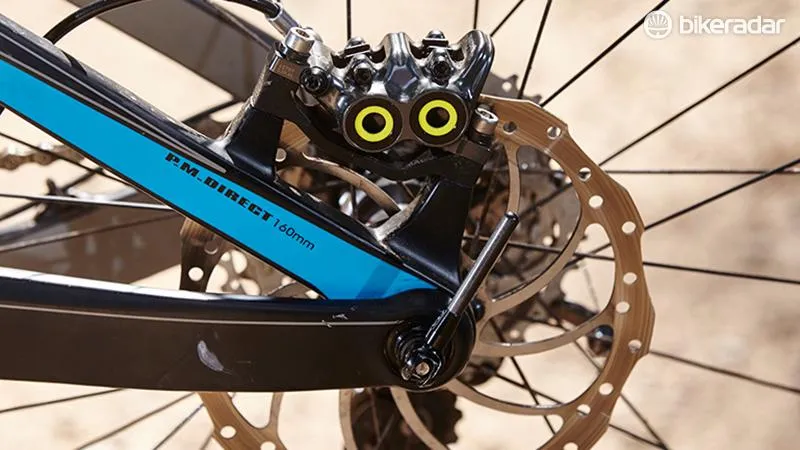
The Lynx’s Split Pivot suspension design uses a concentric rear axle pivot
For €4,599 we’d expect some pretty bling kit, especially from a direct-buy (in the UK) brand. Unfortunately we were left wanting. Although the damping at both ends can be adjusted on the fly via a single bar-mounted lever, the Fox 34 fork is the most basic Evolution series version and the CTD shock lacks the slippery Kashima coating. (To be fair, the 2016 spec looks better, with a RockShox Pike RC up front and a Fox DPS rear shock.)
Related: BH Lynx 4.8 27.5 Carbon - first ride
On the plus side, the DT Swiss wheels and 2x10 Shimano XT transmission offer surefire reliability, and there’s a KS dropper post bolted on too. While our test bike was specced with four-piston Magura MT7 brakes, twin-pot MT4s come as standard.
Short on stability
Once you’re aboard the Lynx you can’t get away from the short geometry. The 600mm top tube on our medium frame gave a reach of just 413mm, while the super-short 426mm chainstays limit the wheelbase. The result of this is that, even with a relatively slack 67-degree head angle, the Lynx feels seriously lacking in stability on fast downhills.

The Lynx's short-but-slack geo makes for a frustrating experience
It’s a real shame, because the rear suspension action is good, with a surprising amount of support from the basic damper and total predictability. Combine this with the low BB and the frame writes a cheque for ploughing potential that the rest of the geometry can’t cash. Even in tight turns where the short wheelbase should be an advantage, the feeling of being squeezed between the wheels doesn’t seem to result in any added speed.
The Evolution series Fox fork is hugely lacking in support when you push the bike hard, further affecting stability. Switching to ‘trail’ mode provides more support up front, but because the CTD levers are linked it simultaneously makes the rear end feel harsher.
The 2x10 transmission was as reliable as expected and it was good to have a crawler gear for the climbs, though without a chain guide we did drop the chain a couple of times on really rough descents. The KS post was faultless and the DT Swiss wheels took more abuse than we thought they could, especially with low pressures in the Michelin Wild Grip’R tyres, which were, pleasingly, already set up tubeless.
